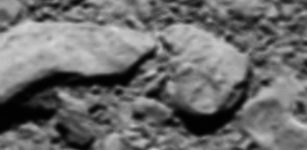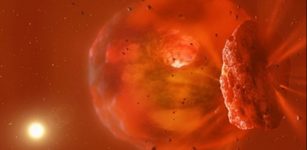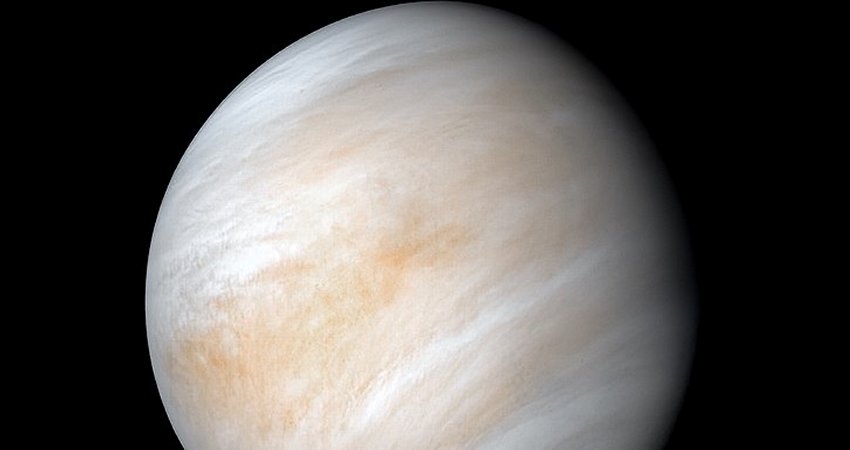Super-Earth Located Only 8 Parsecs Away – Discovered
Eddie Gonzales Jr. – MessageToEagle.com – A hot super-Earth in orbit around a nearby red dwarf star Gliese 486, only 26 light-years from the Sun has been discovered by the CARMENES astronomers and their partner the Instituto de Astrofisica de Canarias (IAC).
 Artistic impression of the surface of the newly discovered hot super-Earth Gliese 486b. With a temperature of about 700 Kelvin (430 °C), Gliese 486b possibly has an atmosphere. Credit: RenderArea
Artistic impression of the surface of the newly discovered hot super-Earth Gliese 486b. With a temperature of about 700 Kelvin (430 °C), Gliese 486b possibly has an atmosphere. Credit: RenderArea
The planet they discovered, named Gliese 486b, has a mass 2.8 times that of the Earth and is only 30% bigger. “Calculating its mean density from the measurements of its mass and radius we infer that its composition is similar to that of Venus or the Earth, which have metallic nuclei inside them,” explains Enric Pallé, an IAC researcher and a co-author of the article.
Gliese 486b orbits its host star on a circular path every 1.5 days, at a distance of 2.5 million kilometers. In spite of being so near to its star, the planet has probably conserved part of its original atmosphere (the star is much cooler than our Sun) so that it is a good candidate to observe in more detail with the next generation of space and ground telescopes.
For Trifonov, “the fact that this planet is so near the sun is exciting because it will be possible to study it in more detail using powerful telescopes such as the imminent James Webb Space Telescope and the ELT (Extremely Large Telescope) now being built,” Trifon Trifonov, an astronomer at the Max Planck Institute for Astronomy at Heidelberg, Germany who led the study, said in a press release.
Gliese 486b takes the same length of time to spin on its axis as to orbit its host star, so that it always has the same side facing the star. Although Gliese 486 is much fainter and cooler than the Sun, the radiation is so intense that the surface of the planet heats up to at least 700K (some 430 degrees C).
Because of this, the surface of Gliese 486b is probably more like the surface of Venus than that of the Earth, with a hot dry landscape, with burning rivers of lava. However, unlike Venus, Gliese 486b may have a thin atmosphere.
Calculations made with existing models of planetary atmospheres can be consistent with both hot surface and thin atmosphere scenarios because stellar irradiation tends to evaporate the atmosphere, while the planet’s gravity tends to hold it back. Determining the balance between the two contributions is difficult today.
“The discovery of Gliese 486b has been a stroke of luck. If it had been around a hundred degrees hotter all its surface would be lava, and its atmosphere would be vaporized rock,” explains José Antonio Caballero, a researcher at the Astrobiology Centre (CAB, CSIC-INTA) and co-author of the article. “On the other hand, if Gliese 486b had been around a hundred degrees cooler, it would not have been suitable for the follow-up observations.”
In future observations, the CARMENES team will try to determine its orbital inclination, which makes it possible for Gliese 486b to cross the line of sight between us and the surface of the star, occulting some of its light, and producing what are known as transits.
They will also make spectroscopic measurements, using emission spectroscopy, when the areas of the hemisphere lit up by the star are visible as phases of the planet (analagous to the phases of our Moon), during the orbits of Gliese 486b, before it disappears behind the star. The spectrum observed will contain information about the conditions on the illuminated hot surface of the planet.
“We can’t wait until the new telescopes are available,” admits Trifonov. “The results we may obtain with them will help us to get a better understanding of the atmospheres of rocky planets, their extensión, their very high density, their composition, and their influence in distributing energy around the planets.
Written by Eddie Gonzales Jr. – MessageToEagle.com Staff











